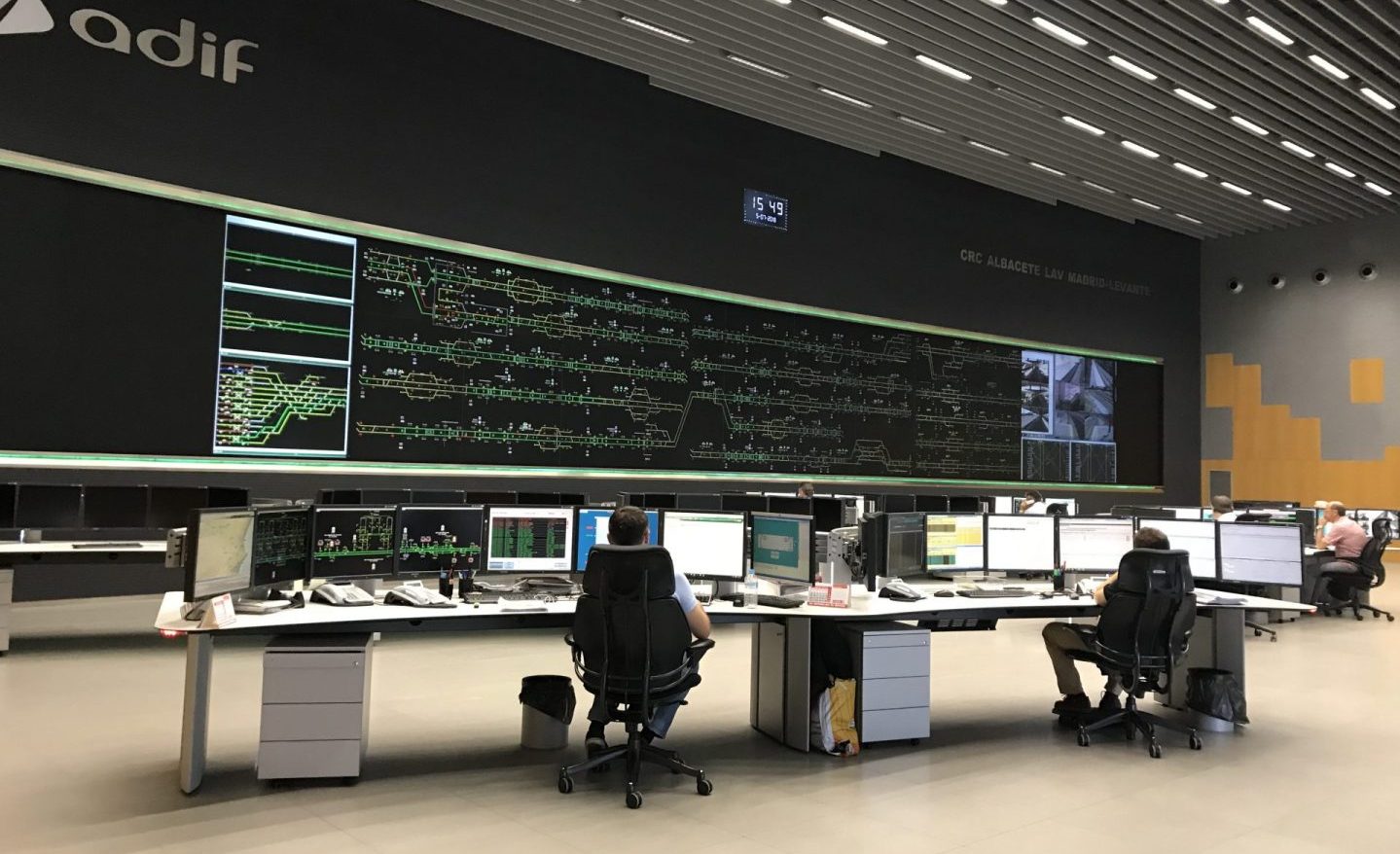The only system that can lead to the alignment of the European railway and that is supported by environmental policies, climate change and digitisation is the European Rail Traffic Management System (ERTMS). Although in the past stages and European budgets the need for such a system at the level of the European Union has been emphasised and its capability and advantages have been demonstrated, the implementation of this unique system is slow and faces various challenges. But through the latest and most ambitious European Green Deal agenda, the ERTMS is seen as a vital part of the development of rail transport, the elimination of fragmentation across the continent, the digitisation of transport and the increase of capacity to take over road traffic in order to reduce greenhouse gas emissions. The single signalling system is supported, more than ever, by many programmes and policies and it is time for the European railway system to show its potential, precisely through the ERTMS.
by Pamela Luica
An effective transport system that meets a high degree of safety, is sustainable and contributes to integration is one that also benefits from the latest technologies on all components. In the railway segment, one of the most important and ambitious projects, in addition to eliminating the missing cross-border links is the large-scale deployment of the European Rail Traffic Management System (ERTMS), the system being considered a unique opportunity for the formation of a unitary railway system where freight and passenger trains have multiple seamless connection options.
For the European Union, the implementation of this major industrial programme is a priority in the field of railways – a mode of transport strongly supported by the Green Deal strategy, which aims to make 2050 the year that brings to the fore the first climate-neutral continent. The Sustainable and Smart Mobility Strategy also puts sustainable modes of transport – rail and inland waterway – first, where they must support the shift of a substantial part of road freight traffic. The reason behind the decision to transform the transport system is simple: to reduce 90% of greenhouse gas emissions in the transport sector to support the goal of rendering the European Union climate neutral in three decades. This will be achieved both through shifting traffic to environmentally friendly modes of transport, through the creation of new capacities in the case of systems that have to support additional volumes and through digitisation that will become an essential component of modernising the entire transport system to make it efficient and integrated. Digitisation and automation are among the priorities of the European authorities in order to create a system and services that are extremely reliable and secure, comfortable and fast, ready to respond to any challenge.
The new EU mobility strategy states that a smart and efficient system, with adequate capacity provided by management systems, is supported by ERTMS deployment which will be the digital core of the European railway.
This system is mentioned in the strategy presented in December 2020 in two of the 10 flagships (Flagships 6 and 7) and is part of the chapters making reference to smart mobility and innovation. Flagship 6 (Smart Mobility), which focuses on creating fully connected and automated multimodal mobility, provides for the adoption of a package of technical standards and specifications regarding ERTMS/Control-Command and Signalling (CCS) and the development of mandatory plans for automatic train operation, automated traffic management and advanced CCS for 2022.
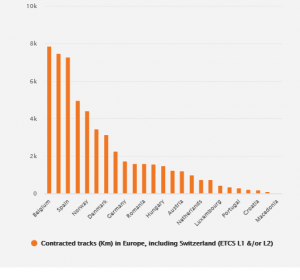 Flagship 7, which aims at innovation, Artificial Intelligence and data for the formation of smart mobility, states that next year there will be a review of the legal framework for interoperable data sharing in rail transport, including ERTMS and telematics applications.
Flagship 7, which aims at innovation, Artificial Intelligence and data for the formation of smart mobility, states that next year there will be a review of the legal framework for interoperable data sharing in rail transport, including ERTMS and telematics applications.
In order to achieve a railway system suitable from all points of view, it is necessary to accelerate the deployment of ERTMS on 65,000 km of lines as part of the TEN-T Core Network that includes CNCs until 2030, the deadline specified by all programmes and strategies in the field of European rail transport, and later on the Comprehensive Network which should form a truly Single European Rail Area consisting of 122,000 km of equipped lines by 2040.
The ERTMS aims at eliminating more than 30 national signalling systems to ensure the interoperability of the European railway system and has a high capacity on existing lines to meet the growing demand for transport as it reduces train succession times by allowing 30% more capacity on the existing network and, if associated with infrastructure modernisation and optimisation, capacity can increase by more than 40%. As the full deployment and operation of the system will bring increased network capacity, it will be possible to shift traffic to the railway and meet climate and digital targets.
The ETCS is currently operational on 14% of the Core Network Corridors, namely on 6,800 km, a figure that represents 43% of the European Deployment Plan (EDP) for 2023, when 15,682 km of lines should be equipped and operational.
In a discussion with Carlo Borghini, the Executive Director of the Shift2Rail Joint Undertaking, European ERTMS Coordinator, Matthias Ruete, stated in June that 7,000 km of CNCs are under construction for the deployment of the system, and at EU-27 plus Norway and Switzerland, over 41,000 km are contracted, including over 10,000 km of lines in operation.
“This is still not enough. Trackside deployment has to accelerate. We should make considerable efforts to gradually move from ERTMS islands to entire corridors and networks”, Matthias Ruete said.
A close overview of this ambitious European Union programme indicates a fragmented deployment and missing links that need to be addressed, and therefore accelerating the deployment becomes essential in order to achieve the objectives step by step. Ruette points out that few EU states do not have credible plans for the deployment of the ERTMS even on the core network, while other countries implement the system only on the core network and most Member States are engaged in national deployment and trackside decommissioning of class B systems.
But for this trackside decommissioning, at least 38,000 vehicles must be equipped with ERTMS, where only 5,000 units are currently equipped. In addition, a systematic approach is needed for the deployment of the ERTMS both at trackside and on-board vehicles.
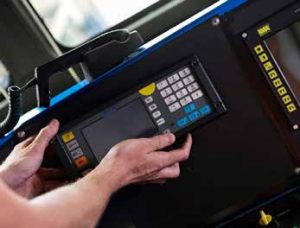 Cross-border sections are essential for the deployment of the ERTMS as they have a major impact on operators and should be completed through national sections that ensure the operation of ETCS along the entire route, from origin to destination.
Cross-border sections are essential for the deployment of the ERTMS as they have a major impact on operators and should be completed through national sections that ensure the operation of ETCS along the entire route, from origin to destination.
According to the ERTMS report published in May 2020, three years after the publication of the EDP, the delay is 1,600 km or 10% of the deployment planning for 2023 and 3.2% of the planned total. A large part of the delayed sections is under construction and the delay is 2-3 years. Delays are mainly due to constraints of national budgets, the lengthy tendering process, insufficient industrial capacity or extremely well-developed documentation.
Since the ERTMS does not only mean trackside deployment, the rolling stock operating on the European railway must also be properly equipped. A maximum of 4,337 ERTMS on-board units have been installed and since some trains require two on-board units, the number of equipped vehicles is 3,600. It should be noted that, in recent years, 900 new vehicles have been put into operation on the European network, these being equipped with ERTMS. Although 5,000 new vehicles have been introduced, most (or approximately 80%) are subject to derogations or are exempt from the request to be equipped with ERTMS, one of the reasons being that they run on regional lines. In addition, it is estimated that 2,700 existing vehicles need to be retrofitted.
In conclusion, an estimated number between 27,500 and 38,500 vehicles should be equipped by 2030.
Speeding up its rollout
In July 2021, MEPs announced the need to speed up the deployment of the ERTMS since it is being done at a slow pace and requires increased coordination and investment allocation. As a result, the representatives of the European Parliament adopted a resolution on the safety and signalling of railway traffic which scrutinises the deployment of the ERTMS and requires its implementation as specified in the objectives.
Like the European Court of Auditors’ report released in 2017 which concluded that deployment was low, limited and uneven, MEPs believe that ERTM roll-out is far behind set targets and therefore not one can speak of complete interoperability at the level of the European Union.
“We need to end the fragmentation of Europe’s railways, a problem that is preventing this mean of transport from contributing to European mobility. We also need to ensure that European rail traffic management system is deployed on time,” EP rapporteur Izaskun Bilbao Barandica said.
Cooperation is vital for the implementation of the management system and a tenfold increase in the pace of deployment is required to achieve the digital transition, improve the safety of the railway system and achieve the target set for 2030.
At the end of 2020 only around 13% of Core Network Corridors operated with ERTMS, and its deployment in other corridors is at a low percentage, between 7 and 28%, states the text adopted on July 7th, 2021. The resolution calls for the alignment of national implementation plans with the targets set by the European Union for the decommissioning of obsolete national systems. The document also states that national regulations create barriers to interoperability and impede seamless operation across the European network, and therefore calls for harmonisation of operational requirements, including engineering and technical rules, such as variable axle gauges, dimension and voltage of the wagons. In addition, in order to overcome the inefficiencies in public procurement for the deployment of ERTMS, MEPs specify that a common format for public tenders and procurement should be established by the European Commission. This could be done on the basis of an agreed proposal from 2018, and the Commission could address in a legislative proposal all the technical aspects to ensure successful procurement, resulting in a reduction in implementation time, removal of barriers to the whole process, and compatibility with latest ERTMS baseline available.
MEPs also raised the issue of insufficient industrial capacity and call on the Commission to draw up and present a legislative proposal for an ERTMS industrial strategy.
As a result, the European Commission was asked to draw up a list of cross-border rail connections on the core network where full deployment of ERTMS had not been carried out and to publish the conclusions to draw attention to the EU’s added value regarding the full deployment of ERTMS on those connections.
The decommissioning of Class B systems is moving at a slow pace and only a few Member States have adopted decommissioning plans under the ERTMS national implementation plans (NIPs). In addition, as there is at present no legal framework or legal obligation for the decommissioning of Class B systems, nor a timetable for this process, most states have not introduced this recital.
As a result, the EP report recommends that the Commission draws up a general strategy for the decommissioning of Class B systems that includes regulatory deadlines aligned with the binding targets set by the EU. The effectiveness of this medium and long-term investment strategy depends on the involvement of stakeholders, including industry and operators, but also on the willingness of Member States to fulfil their obligations under the TEN-T Regulation. The Commission could introduce a regulatory provision to ensure that ERTMS NIPs are legally aligned (in both regulatory and geographic terms) with the binding ERTMS deployment targets set by the EU legislation in order for the two networks to be operational with the signalling system in 2030 and 2040.
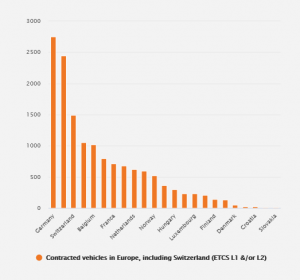 With regard to rolling stock, the timeframes for authorisation processes for retrofit projects, in particular those for conformity-to-type authorisation processes for rolling stock for the national area of use only, still differ due to divergent assessments by national safety agencies on the need to re-authorise a series of modifications. It follows that the authorisation timeframe for each vehicle is one month, and the Commission could issue legislative initiatives to ensure that the authorisation procedures following type authorisation processes, especially conformity-to-type authorisation procedures related to retrofit of on-board ERTMS subsystems for the national area of use are streamlined and harmonised by means of fast-tracked control operations in order to reduce the time required to grant conformity-to-type certificates. The EP also believes that conformity processes should further strengthen the involvement at an early stage of the industrial suppliers and national safety agencies concerned in order to avoid discouraging operators from undertaking large-scale deployment projects. Here the European Railway Agency can get involved in conformity-to-type procedures when the vehicles are intended solely for the national area of use.
With regard to rolling stock, the timeframes for authorisation processes for retrofit projects, in particular those for conformity-to-type authorisation processes for rolling stock for the national area of use only, still differ due to divergent assessments by national safety agencies on the need to re-authorise a series of modifications. It follows that the authorisation timeframe for each vehicle is one month, and the Commission could issue legislative initiatives to ensure that the authorisation procedures following type authorisation processes, especially conformity-to-type authorisation procedures related to retrofit of on-board ERTMS subsystems for the national area of use are streamlined and harmonised by means of fast-tracked control operations in order to reduce the time required to grant conformity-to-type certificates. The EP also believes that conformity processes should further strengthen the involvement at an early stage of the industrial suppliers and national safety agencies concerned in order to avoid discouraging operators from undertaking large-scale deployment projects. Here the European Railway Agency can get involved in conformity-to-type procedures when the vehicles are intended solely for the national area of use.
It is important to mention the prototypes which are one of the major bottlenecks for on-board retrofitting due to their complicated and time-consuming, but also expensive nature in terms of their development. The Parliament’s resolution calls for the creation of an EU platform for the development of prototypes (pointing out the risk of the same product receiving European funding from multiple sources) in order to favour large economies of scale, harmonisation and competitiveness, but also the creation of a transparent register of solutions and projects that have already been funded.
Financing and conditioning
It is clear that European funds are not sufficient to co-finance the necessary projects leading to the deployment of ERTMS on the entire core and comprehensive network of the European Union, and the deadline set (2030) is closer and closer, where the deployment of the system is currently facing various challenges, not just financial.
The investment dimension of the ERTMS deployment is mentioned in the 2020 report of Coordinator Matthias Ruete and it has a low estimated cost of EUR 79.6 billion and a high one of EUR 116.8 billion, both variants including the associated costs for the core and the comprehensive networks, 5% of the mentioned values being the values for retrofit and upgrade of the rolling stock fleet.
Without associated costs, the trackside deployment for Core Network requires investments of EUR 11.6 billion between 2021 and 2030. If associated costs are included, the low estimate for the core network is EUR 27.4 billion for 2015-2050 and the highest estimate is EUR 41.1 billion.
For 2050, the total investment of ERTMS deployment on core and comprehensive networks reaches EUR 37.3 billion without associated costs, and with them, the total investments for the comprehensive network (excluding the core network) amount to EUR 47 billion (low estimation) and to EUR 70.7 billion (high estimation).
In the case of installing the ERTMS on board vehicles, in the period between 2021 and 2030, the total investments are EUR 4.78 billion, of which EUR 1 billion for freight vehicles and EUR 3.74 billion for passenger vehicles including conventional ones (EUR 3.5 billion) and high-speed trains (EUR 227.5 million).
In the previous multiannual financial framework, the deployment of the ERTMS had an estimated budget of EUR 2.7 billion of which EUR 850 million was covered by the Connecting Europe Facility and EUR 1.9 billion was secured by the European Structural and Investments Funds through the European Regional Development Fund (ERDF) and the Cohesion Fund, intended for states in eligible regions.
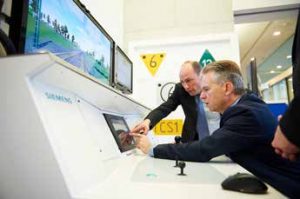 An innovative financial instrument was introduced in 2017 by launching the Blending call through which the selected projects received a combination of funds through CEF, EFSI, EIB, the National Promotional Bank and private sector investor. This type of action targeted a minimum action of EUR 10 million and the concept of financial preparation requiring beneficiaries to demonstrate full financial closure. Through this financial solution, EUR 200 million has been allocated to the activities of the ERTMS signalling system.
An innovative financial instrument was introduced in 2017 by launching the Blending call through which the selected projects received a combination of funds through CEF, EFSI, EIB, the National Promotional Bank and private sector investor. This type of action targeted a minimum action of EUR 10 million and the concept of financial preparation requiring beneficiaries to demonstrate full financial closure. Through this financial solution, EUR 200 million has been allocated to the activities of the ERTMS signalling system.
The CEF report published in 2019 states that 73 ERTMS projects were supported and received over EUR 1 billion, with a total of EUR 2 billion in investments. For the trackside deployment, activities for 5,941 km of first deployment and upgrading activities for 858 km of railway were supported. In the case of on-board deployment, CEF Transport funds supported retrofitting projects for 2,498 vehicles, upgrade projects for 607 units and 80 prototype vehicles.
According to the EU climate tracking methodology for EU expenditure, for the new programming period, the ERTMS accounts for 40% of the contribution to climate and environment objectives and 30% of expenditure under the Cohesion Policy Funds and InvestEU, 37% under the Recovery and Resilience Facility (RRF) and 60% under the CEF must be allocated to actions and projects aimed at combating climate change. Since the RRF stipulates that 20% of investments should be oriented to the digital sector and in its methodology for digital tagging set out in its regulations, 100% of the investment in the ERTMS is digital.
In general, through the long-term budget 2021-2027 together with the NextGenerationEU recovery tool which together amount to over EUR 2 trillion, more than 50% will be distributed to the modernisation of the European Union through research and innovation, digital transition and recovery and resilience. 20% of NextGenerationEU, which includes the Recovery and Resilience Facility programme, will be invested in digital transformation,
In order to strongly support this digitised system that offers innumerable benefits, the Commission together with the Member States should ensure and facilitate synergies between all European Union financial instruments such as CEF and its Blending Facility, the Cohesion Fund and InvestEU, and access to NextGenerationEU; moreover, Member States should promote and implement the ERTMS projects as a priority in their recovery and resilience plans.
The deployment of the ERTMS requires a total investment of EUR 17 billion, of which EUR 12 billion for trackside and EUR 5 billion for on-board systems. In this respect, European funds support trackside deployment, but can only cover a limited amount of the overall cost, leaving individual infrastructure managers and railway undertakings to shoulder most of the costs. However, due to the fact that these undertakings face financial challenges and national budgets are constrained, it is necessary to improve the existing financial instruments to incentivise large-scale investments in the ERTMS. In this regard, Parliament recommends that the Commission draw up all-encompassing guidelines in support of both trackside and on-board deployment.
The Commission can get involved by identifying a package of measures that the Member States and the European Union may undertake to scale up the deployment of the single signalling system, while ensuring that businesses are viable for the undertakings concerned and taking into consideration the role of infrastructure managers as potential providers.
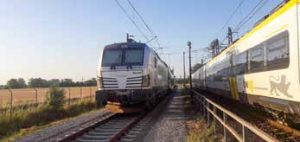 Since European funds are not sufficient to cover the necessary level of investments, there is a need for planning and commitment from European and national authorities to further improve the attractiveness of investing in the ERTMS and to guarantee legal certainty for private investors who, together with other stakeholders, can generate the desired result.
Since European funds are not sufficient to cover the necessary level of investments, there is a need for planning and commitment from European and national authorities to further improve the attractiveness of investing in the ERTMS and to guarantee legal certainty for private investors who, together with other stakeholders, can generate the desired result.
However, there is also a need to increase the co-financing rates of European funds by more than 50% under CEF funding when cross-border links projects are embedded in accelerated plans to scale up the deployment of the ERTMS.
But Parliament stresses that European funds need to be granted for new railway line projects only if they include ERTMS equipment and the European Railway Agency should systematically assess the compliance of EU funded projects with TSIs in order to avoid difficulties concerning the compatibility of the ERTMS versions installed.
The interesting part is that the European Parliament calls on the Member States to grant a 75% reduction in track access charges for a period of 10 years to railway undertakings that equip their entire locomotive fleet with the ERTMS Baseline 3.
As the signalling system is supported by every financial instrument and many programmes, it is an important part of achieving the goals of the ambitious European Green Deal agenda. Since it points out the importance of modal shift to rail and given that the Sustainable and Smart Mobility Strategy sets the milestones of doubling high-speed rail traffic by 2030 and rail freight traffic by 2050, significant additional capacity is needed that cannot be provided without a coherent and harmonised acceleration of the roll-out of the ERTMS on the European rail network.
Share on:



